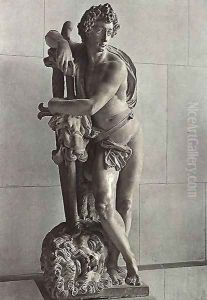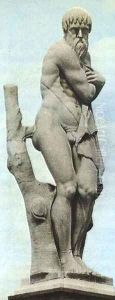Pietro Francavilla Paintings
Pietro Francavilla was an Italian sculptor who was born Pietro Franco in 1548 in Villafranca di Verona, Italy. He is often recognized for his work within the Mannerist tradition, which is characterized by elongated forms and an emphasis on style over strict adherence to the physical accuracy of the subjects.
Francavilla's artistic journey began in his homeland, but his career flourished after he moved to France. Before settling in Paris, he studied under the prominent sculptor Giambologna (Jean Boulogne) in Florence, where he learned the techniques and aesthetics that were crucial to his development as a sculptor. Giambologna, a master of Mannerist sculpture, had a profound influence on Francavilla's style and methodology.
In 1575, Francavilla was invited to France by Catherine de' Medici, the Italian-born queen consort of Henry II of France. His move to France marked the beginning of his significant contributions to French art. He became a part of the circle of artists working for the royal court, where he produced various works, including statues, busts, and decorative elements for royal residences and gardens.
Francavilla's works in France were well-received, and he was eventually naturalized as a French citizen. He collaborated with other artists on projects such as the decorations for the Valois Chapels at the Basilica of Saint-Denis and the tomb of Henry II and Catherine de' Medici. His career in France allowed him to establish a successful workshop, and his influence extended to the development of the French Baroque style in sculpture.
Despite being overshadowed by his mentor Giambologna and contemporaries such as Benvenuto Cellini, Francavilla's contributions to the art of sculpture were significant. His style is noted for its grace, the fluidity of form, and the integration of his work into the architectural and natural environments for which they were designed.
Pietro Francavilla died in 1615 in Paris, France. His legacy is preserved in the sculptures and decorative works that continue to adorn the historical sites of France and Italy. His works are also held in various museums, serving as lasting examples of Mannerist sculpture and the international milieu of the late Renaissance period.

